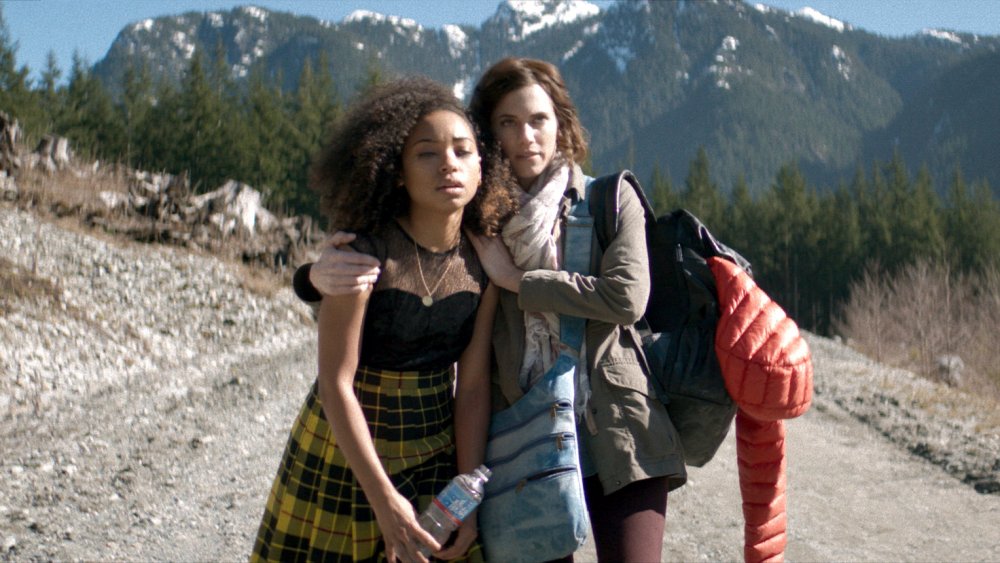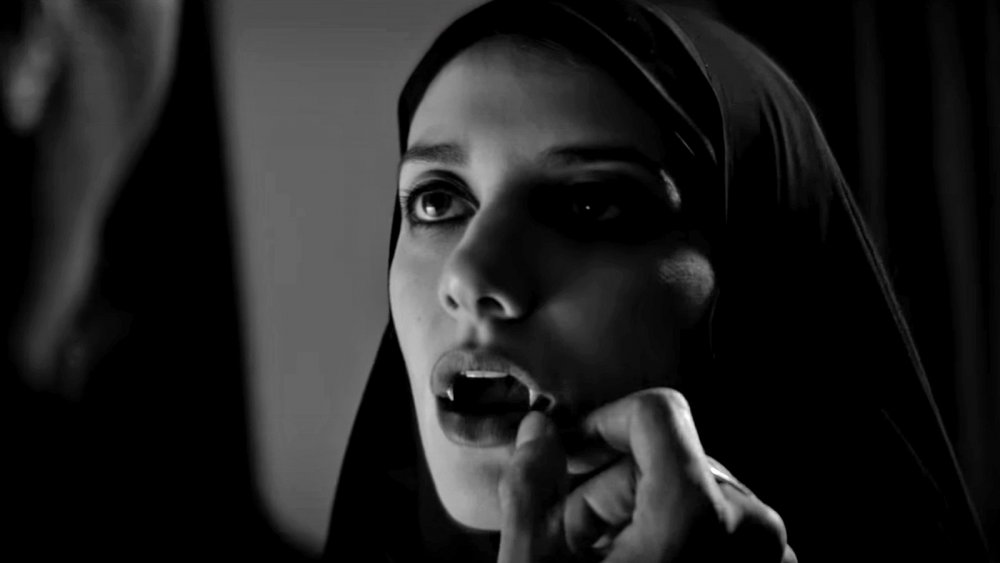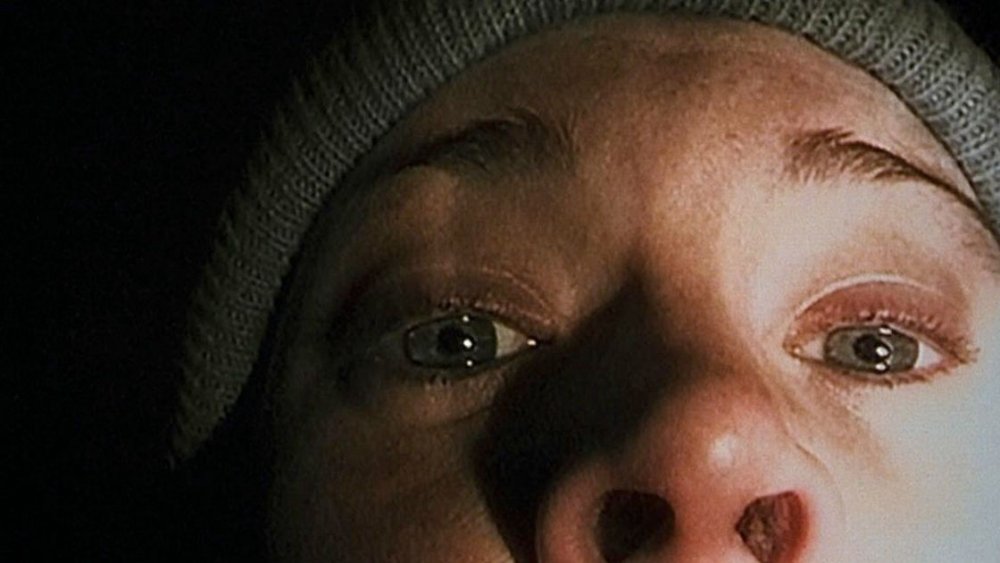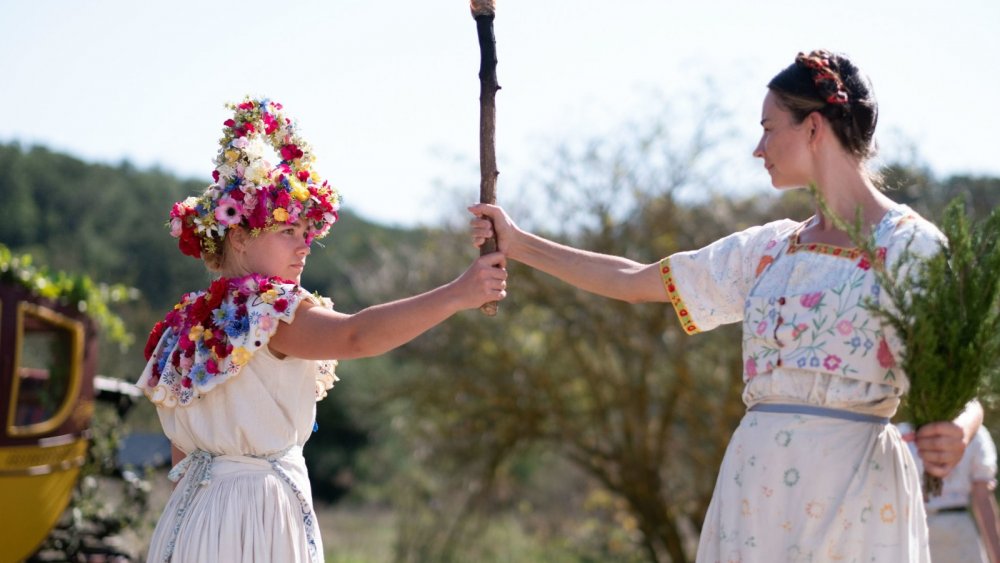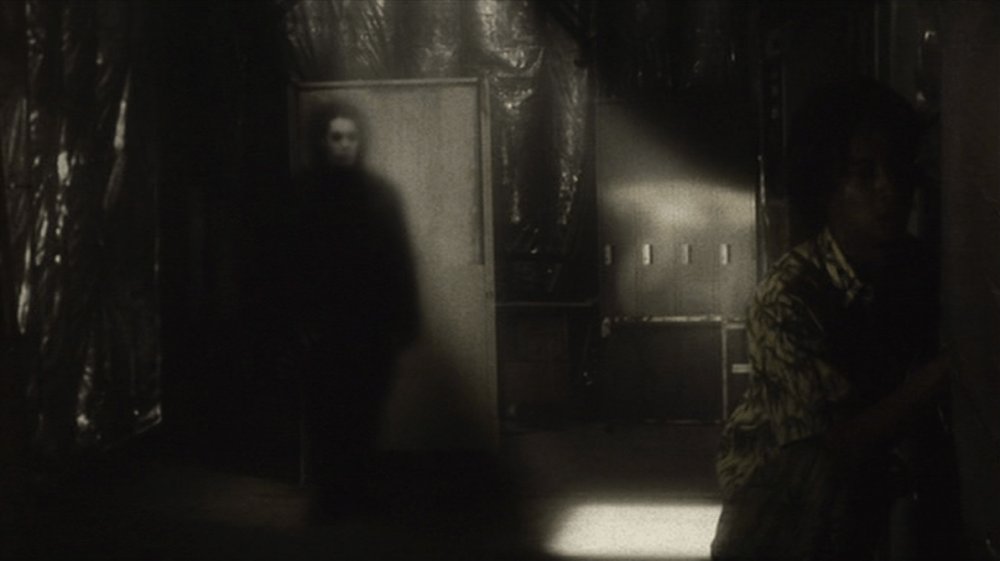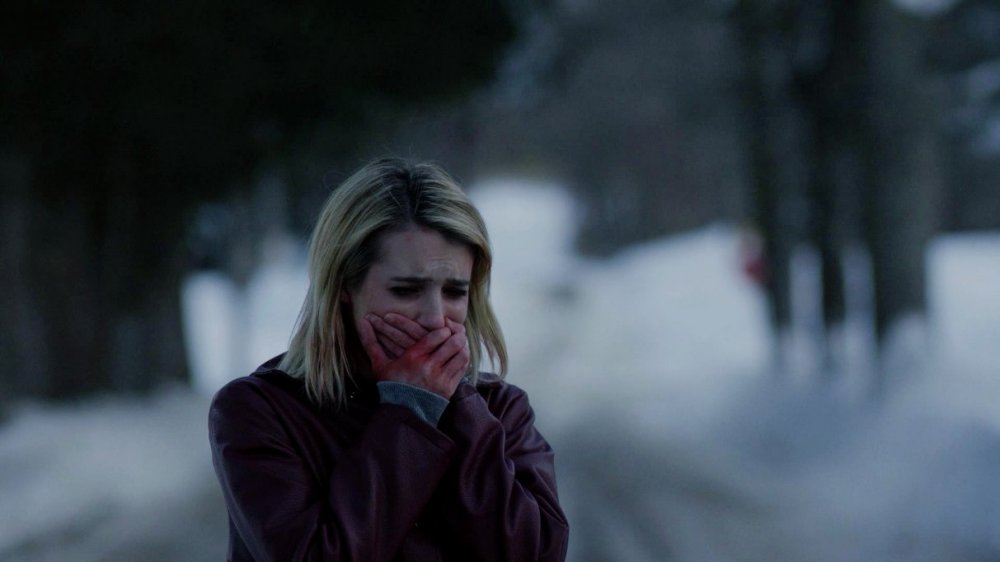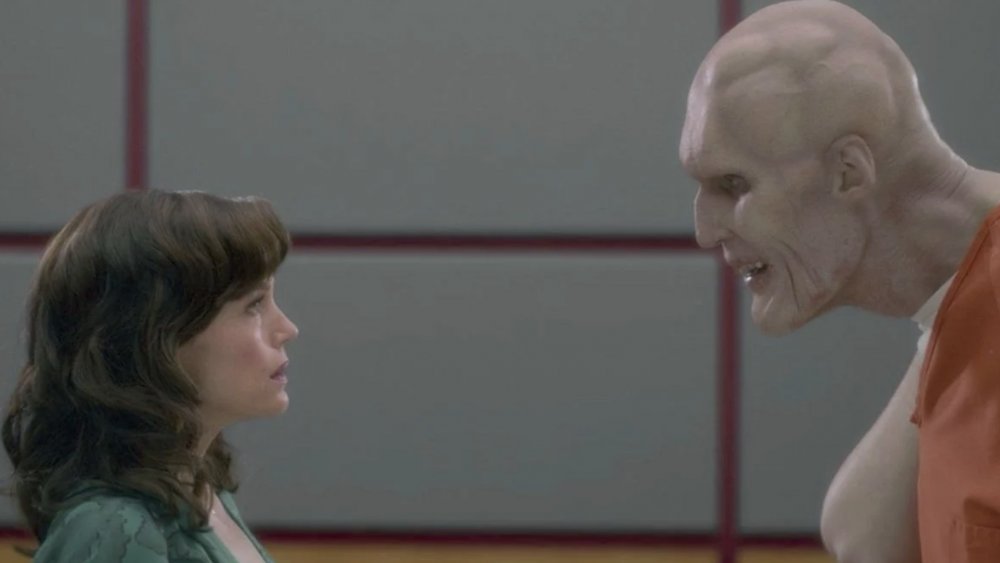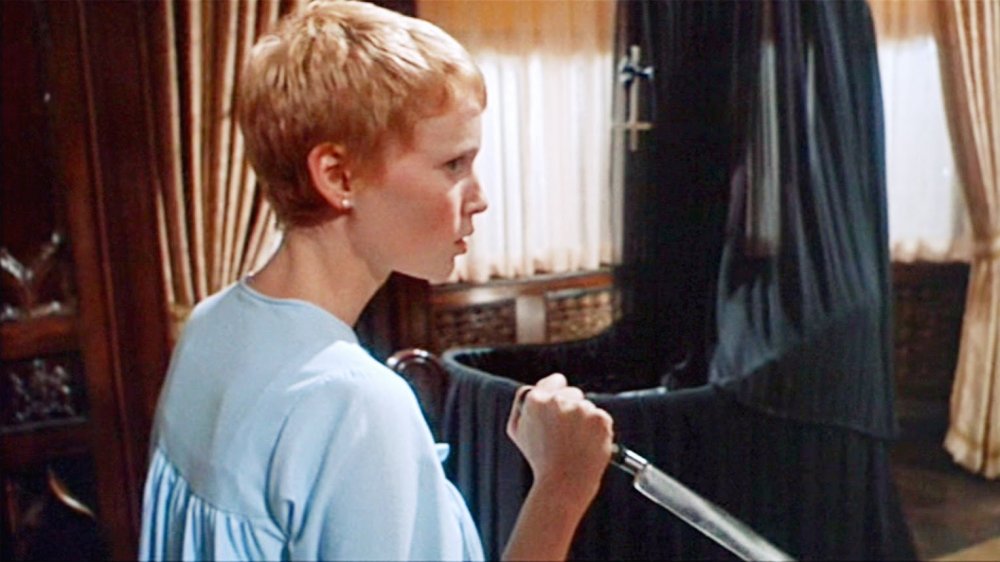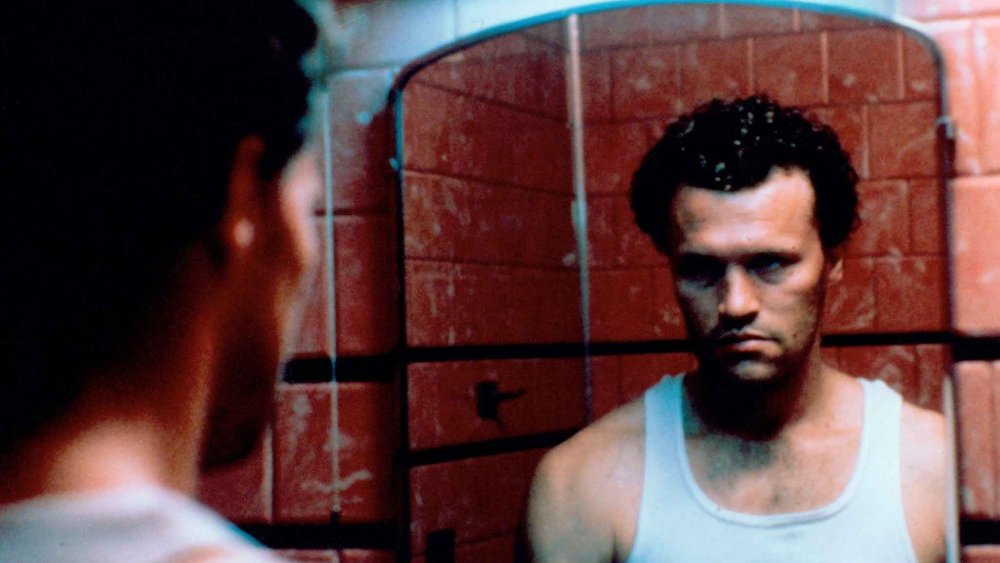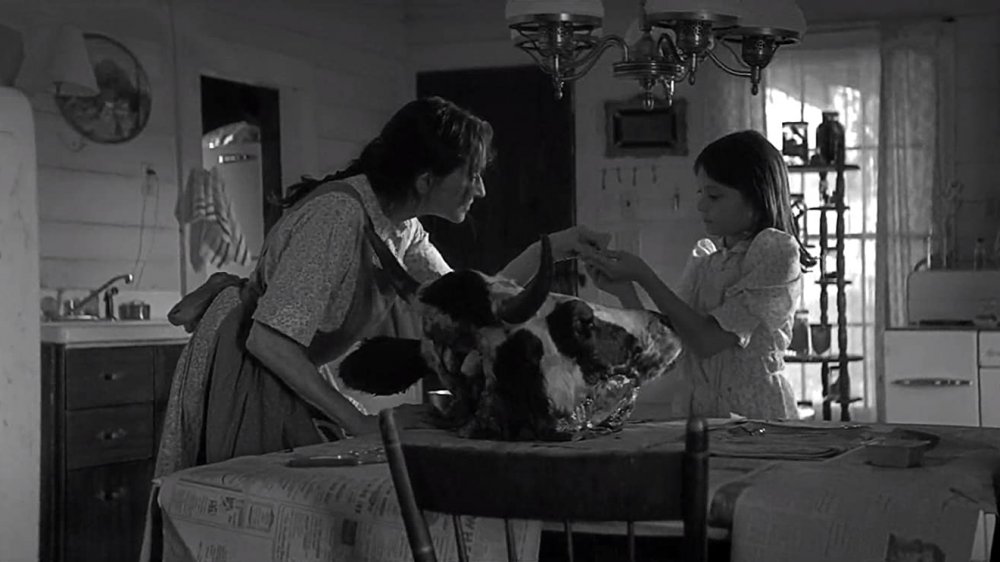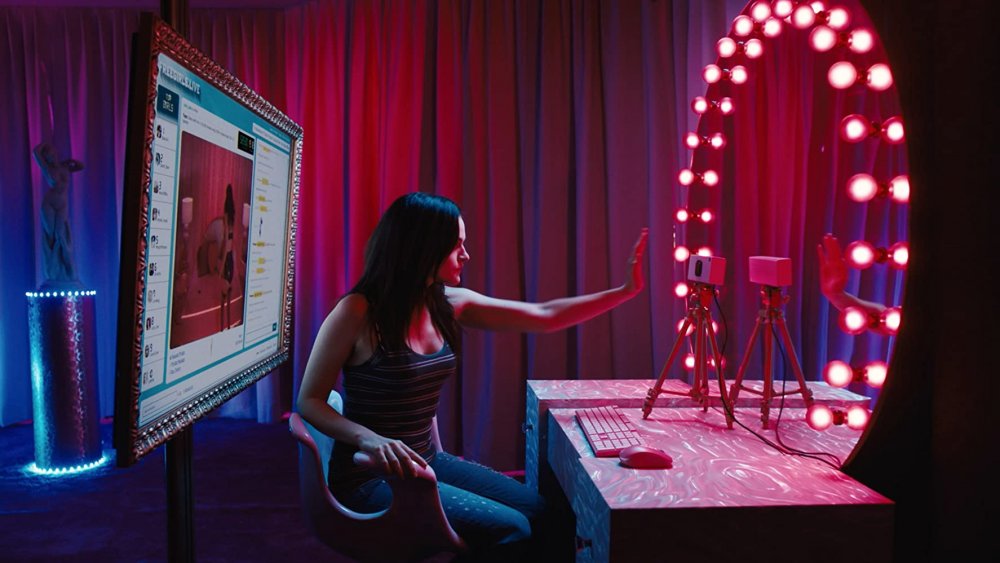Horror Movies With No Jump Scares
While jump scares have garnered a negative reputation over the years, a sudden jolt can be just enough to capitalize on building tension and serve as an effective method of grabbing the audience's attention. Jump scares are also relatively easy to construct, so they make for a great tool that lower-budget films can utilize. Despite the negative connotations associated with jump scares, many films have used them to significant effect, including acclaimed horror hits such as Hereditary, It Follows, and The Witch.
However, there can certainly be too much of a good thing. Many films have relied too much on jump scares to elicit reactions from audiences, creating an over-saturation in the horror genre. Although some filmmakers use the technique to accent the horror in their films, many rely on the jump scare as a lazy method to elicit fear without a need for any thoughtful scene construction. Because of this, some directors who shy away from the practice are hailed as saviors by those who have become disillusioned with the constant barrage of Hollywood jump scares. Whether it's due to fatigue or a dislike for sudden loud noises, some horror fans prefer to keep the films they watch jump-free. Here is a list of horror titles free of any jump scares to help you on your quest for more thoughtful — and terrifying — viewing.
The Perfection
The Perfection follows Charlotte, a musical prodigy who sets aside her aspirations of becoming a world-famous cellist to care for her terminally ill mother. A year following her mother's death, Charlotte gets back in touch with her old teacher Anton, the head of the prestigious Bachoff music academy, and travels to China to reconnect. Once there, Charlotte meets Lizzie, Bachoff's new star pupil.
The two immediately hit it off, and Lizzie invites Charlotte to explore China's rural countryside. Charlotte accepts, however, their mini-vacation starts on the wrong foot when Lizzie starts to feel seriously ill. Despite Charlotte's advice to postpone their trip, Lizzie presses forward, and the pair board a bus. On their ride, it becomes apparent that something is seriously wrong with Lizzie, who is struggling to remain calm after she throws up maggots, terrifying everyone around her. Unable to speak fluently in Chinese, Charlotte frantically begs the driver for help, but ultimately ends up stranded with Lizzie in the wilderness. As Lizzie's health continues to deteriorate, Charlotte has to take drastic measures to ensure Lizzie survives... by cutting off her hand.
The Perfection utilizes a few twists and turns to keep viewers on the edge of their seats, but despite some especially tense or graphic moments, the film never strays into jump scare territory. The film instead focuses primarily on psychological horror elements, though there are still some violent scenes that are likely to make your stomach churn.
A Girl Walks Home Alone at Night
A Girl Walks Home Alone at Night is a Persian film about an unlikely romance between a young man named Arash and a mysterious woman. One fateful night, Arash stumbles across the woman while lost and is brought back to her apartment where the form a bond with one another. Unknown to Arash, is the fact that the woman is actually a vampire who has no qualms about seducing and killing young men.
Like many vampire films, A Girl Walks Home Alone at Night tackles the vampire as an anti-hero figure, capable of being both a ruthless killer and a savior. The vampire is the woman referred to in the film's title, but she is not as helpless as the title might suggest; she may be walking home alone at night, but it is others who should be looking over their shoulders. The film shows the woman interacting with the people of Arash's Iranian hometown, examining different aspects of her nature as a vampire. Talking to Wired, Ana Lily Amirpour, the film's director, described the multifaceted nature of vampires by saying, "A vampire is so many things: serial killer, a romantic, a historian, a drug addict — they're sort of all these things in one." In the end, A Girl Walks Home Alone at Night is at once as horrifying and entrancing as its layered vampire lead.
The Blair Witch Project
The Blair Witch Project is a classic found-footage horror movie that provides plenty of fright without relying on any cheap jump scares. The film begins when Heather, a film student working on a documentary about the mysterious Blair Witch, camps out with her two friends, Mike and Josh, in the woods where the witch supposedly murdered her victims. After their first night, the group discovers a small cemetery with cairns. The next day, they wake up to find the cairns outside their campsite. While this is undoubtedly unsettling, things quickly go from slightly spooky to outright disastrous when Heather and her friends become lost, and Josh goes missing.
The Blair Witch Project is often regarded as one of the creepiest found-footage films of all time, and while a good chunk of that reputation can be attributed to creative marketing, the film itself does a great job of creating a creepy and tense atmosphere. Very quickly, the friend group begins to dissolve into fighting and dissent once it becomes apparent they are lost in the woods, and their frustration is only amplified by the fear of the unknown witch who may or may not be lurking in the shadows.
Midsommar
Directed by Ari Aster, the creative mind behind Hereditary, Midsommar is a perfect film for horror lovers who hate jump scares. The film follows Dani, a young woman who has recently lost her parents in an unexpected accident. Dani's boyfriend, Christian, feels compelled to invite her along on a group vacation to a friend's hometown in a small Swedish village. Once the group arrives in Sweden, they are invited to partake in the village's festivities. But despite the friendly faces and flowery facade, an ominous undertone permeates the seemingly peaceful setting. And as the curious guests unceremoniously trample over the village's customs and traditions, things take a more sinister turn.
One of the unique aspects of Midsommar is the use of mind-altering substances by the main characters and how it's depicted onscreen. Many horror films use the cover of night or fog to keep their characters from seeing their surroundings clearly, but Aster chooses to take the road less traveled. The drugs not only alter how the characters see the world, but they also keep them from being in their right minds. This loss of agency helps to make the bright, colorful world of Midsommar truly frightening and always unsettling. Paired with its discussion of unhealthy relationships, mental health, and disrespectful tourists, Midsommar succeeds at being both a mesmerizing and deeply disturbing example of folk horror.
Kairo: The Pulse
While some may be more familiar with the 2006 American remake, the original 2001 Japanese title Kairo: The Pulse has garnered a cult following for its grim atmosphere and progressively creepy, slow-burn approach to storytelling.
The Pulse is a horror story about ghosts releasing from the internet and wreaking havoc on the living. The film features two converging storylines, both showcasing characters experiencing encounters with the internet apparitions. The first follows Michi, a woman who works at a plant shop. When she goes to retrieve a floppy disk from one of her co-workers, Taguchi, he is acting strangely and ultimately hangs himself. Left with only the disk for clues, Michi and her co-workers discover footage of a ghost. The second storyline focuses on Ryosuke, an economics student who comes across a series of disturbing images after he signs up for a new internet provider. In both stories, Michi and Ryosuke's friends become depressed and begin to disappear one by one, and eventually, all of Tokyo becomes a post-apocalyptic landscape.
Though many supernatural horror flicks rely on cheap jump scares to convey any frights, The Pulse instead utilizes a deep sense of dread and clever cinematography to achieve its intended effect. You won't find any screaming ghosts or dramatic music stings, but this post-apocalyptic ghost story will easily leave you wanting to return to the simpler days before the internet took off, when the threat of an internet-related haunting was at an all-time low.
The Blackcoat's Daughter
Osgood Perkins' first film, The Blackcoat's Daughter favors an atmospheric approach to horror rather than the action-packed take favored by many similar titles in the genre. The film begins by following a lonely girl named Kat living at a religious boarding school where she makes a rather unseemly friend. As just about everyone else has left for winter break, Kat becomes convinced that her parents have died, and she begins acting like she's been possessed, much to the dismay of the nuns looking after her until her parents arrive.
The film has been praised by critics for its atmospheric moodiness, lack of jump scares, and its evocation of rising dread. For the director, The Blackcoat's Daughter was never mainly about the traditional horror elements. In an interview with the A.V. Club, Perkins said, "I only wanted to indicate the possession subgenre enough to get people oriented, and then you can kind of do what you want." For him, the horror was a vehicle to deliver the much more powerful emotional core of the narrative, so no jump scares were needed.
Gerald's Game
Based on a novel written by Stephen King, Gerald's Game is perfect for horror hounds with an aversion to jump scares, but who live for plausible terror. The film begins when Jessie and Gerald go to a remote house by a lake where they can share some intimate time together. After Jessie leaves food out for a stray dog, the couple moves to the bedroom with Gerald using a pair of handcuffs to secure Jessie's hands to the bedposts. Within a matter of moments, Gerald suffers a heart attack and lays unresponsive on the bedroom floor. Cuffed to the bedposts, Jessie is unable to help her husband or, as she quickly discovers, herself.
The remainder of the film is devoted to Jessie trying to free herself from the handcuffs while simultaneously confronting her present and past traumas. Though the threat of starvation and dehydration looms overhead, the drama builds as the stray dog returns even hungrier than before. Even worse, a shadowy figure visits Jessie at night — and whether this man is a representation of Jessie's psychological damage or an actual intruder is a frightening prospect that the film teases until the very end. As time ticks away, the suspense builds, making for an effectively terrifying film grounded in realism.
Rosemary's Baby
Usually the birth of a healthy, happy baby is a joyous event, but Rosemary's Baby turns what is supposed to be a celebration into a nightmarish occurrence. Shortly after moving into their new apartment, Guy and Rosemary start planning for an addition to their family. While trying for a baby, Rosemary notices something a bit off with her nosy neighbors, Minnie and Roman. Aside from the chanting in the night, Minnie is just a bit too meddlesome, continually doting on Rosemary and poking around her home. But while Rosemary can handle the older woman's overly friendly demeanor, she begins to suspect something a bit more sinister is going on with Minnie and her husband. Despite Rosemary's desperation to be taken seriously, no one believes her suspicions, and once Rosemary becomes pregnant, she's determined to do whatever it takes to protect herself and her child.
Rosemary's Baby is a terrifying tale about a woman who is gaslighted by the people she trusts. Rosemary is constantly berated, shamed, and misled by everyone around her, making the expectant mother question her own sanity. The horror in Rosemary's Baby stems from a young woman's agency being stripped away by those she trusts, reducing her to little more than a means to an end for those willing to take advantage of a vulnerable woman.
Henry: Portrait of a Serial Killer
Henry: Portrait of a Serial Killer is filled to the brim with gruesome murders, assault, child abuse, and nudity that initially landed the film an "X" rating from the MPAA. Even decades after its release, Henry remains a controversial, uncompromising look into the mind of a coldhearted killer that may prove too shocking for some viewers.
Flashes of Henry's mundane actions end suddenly and are juxtaposed with flashes of crime scenes, clearly telling us that Henry is responsible for multiple deaths. His rampage only continues from here, and the film doesn't shy away from detailing every step of Henry's killing process. From stalking to strangulation, Henry does it all, and the film is absolutely relentless in its cruelty. With this in mind, Henry: Portrait of a Serial Killer is not for the faint of heart. The barrage of graphic imagery and sudden violence may just leave you wishing for a return to the simplicity of a jump scare.
The Eyes of My Mother
Following the twisted life of a lonely woman as she spirals deeper into her own psychosis, The Eyes of My Mother is a fascinatingly horrifying watch. Young Francisca lives on a farm and is taught by her surgeon mother how to remove select body parts from farm animals while they still live. Francisca's life is uprooted when a man invades her home and beats her mother to death before he is subdued by Francisca's father. The man is chained up in the family barn. Francisca decides to operate on him, removing his eyes and vocal cords but keeping him alive so she has a "friend."
This is just the beginning of Francisca's frightful life. While The Eyes of My Mother doesn't utilize any sudden scares, it doesn't hold back on the horror. It relies on Francisca's depravity to create a sense of unease in the audience. What happens when a person slowly goes mad, and their grip on reality begins to slip away? Even worse, what would happen if you were to run into just such a person? Answering these questions is how The Eyes of My Mother creates a bone-chilling experience.
Wolf Creek
When a group of backpackers finds themselves stranded in the Australian bush due to their car breaking down, their vacation takes a sharp turn for the worse. After a man named Mick Taylor offers to help repair the group's car, the friends realize that they would have had a better time walking the rest of the way. Mick turns out to be quite the hostile fellow to strangers on his land, leading to antics which made famed film critic Roger Ebert "want to vomit and cry at the same time."
Wolf Creek uses the brutality of Mick Taylor to create an Australian horror icon on the level of Freddy or Jason. The film used a couple of real Australian serial killers as inspiration for Mick, helping to fuel the character's savage acts. If the brutal imagery of the film isn't frightening enough, the source material certainly is.
Cam
Cam stars Madeline Brewer of Handmaid's Tale and Orange Is the New Black fame as Alice, a camgirl who is trying hard to advance to the number one spot on the streaming website where she hosts her shows. Alice keeps her career a secret from her family while she continues trying to climb the rankings with ever more elaborate stunts for her stream. Just as Alice starts to make some headway, the seemingly impossible happens: a doppelgänger takes over Alice's account and locks the real Alice out.
The horror surrounds Alice's helplessness when facing off against her mysterious imposter. Her attempts at dealing with the problem herself come up short, so she has to turn to others for help — but her family isn't likely to help to continue her controversial work, and male police officers don't exactly take her or her profession seriously. In showing the victimization of someone so precariously positioned, Cam is able to evoke a sense of paranoid fear that comes with working in a taboo profession.

